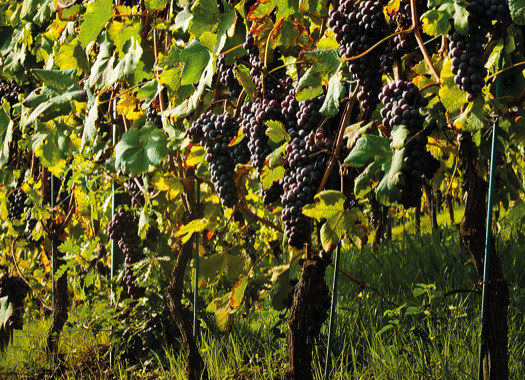Our WORK
Passion, experience, patience
Our wine represents our work. Hard manual work. Dolcetto is a demanding vine which needs constant attention, and only a close-knit relationship between man and vineyard will yield the best results. Each period of the year is marked by a different job that needs doing, and they are all carried out by hand.
The form of vine-training we use is called Guyot. A cane is chosen, and the buds left on this cane in turn produce the fruiting canes. On average, dolcetto vines are pruned back to around eight buds, but the decision depends on the plant’s vigour, which can be assessed by observing the growth of the shoots in the previous year. This long operation lasts all through winter until the beginning of spring, and it will define the whole vintage, so it demands the utmost care and knowledge of the plant.
The canes removed during pruning do not go to waste. Either they are shredded by a mulcher and left on the ground as humus, or they are gathered into bundles and used to heat the oven where we bake our daily bread.
The cane we have chosen during the pruning is arched over and tied onto the horizontal wire. In some cases we still use willow branches (called guret here) to allow the cane to breathe while growing.
This is performed in spring-summer, and is so called because it involves cutting back the plant’s new growth. It eliminates any growth from buds which are sterile and are of no use for next year’s pruning, plus all the double canes as part of an early thinning operation. It is designed to prevent the foliage from becoming too dense, so it should be carried out as early as possible (during bud break), when the shoots are still tender.
Around the beginning of July the canes are twisted round the top wire in the trellis to limit their growth. In our case, the shoots growing above the top wire are cut off by machine in an operation known as topping.
Dolcetto is a very delicate variety, so this operation is important and must be performed with great care, removing the leaves on the inside to prevent moisture building up, while leaving the leaves on the outside to provide shade and protect the grapes, especially in the vineyards which are most exposed to the sun.
When the grapes have already begun to change colour, parts of clusters are removed so as to ensure that the largest, healthiest bunches ripen to perfection.
The grape-harvest is the climax of the vintage, when the fruit of all our hard work can finally be gathered in. It is performed by hand, taking care to discard any dry or rotten berries. The grapes are placed in open plastic boxes holding around 22 kg, to make sure they continue to be in contact with the air on their way to the winery.











